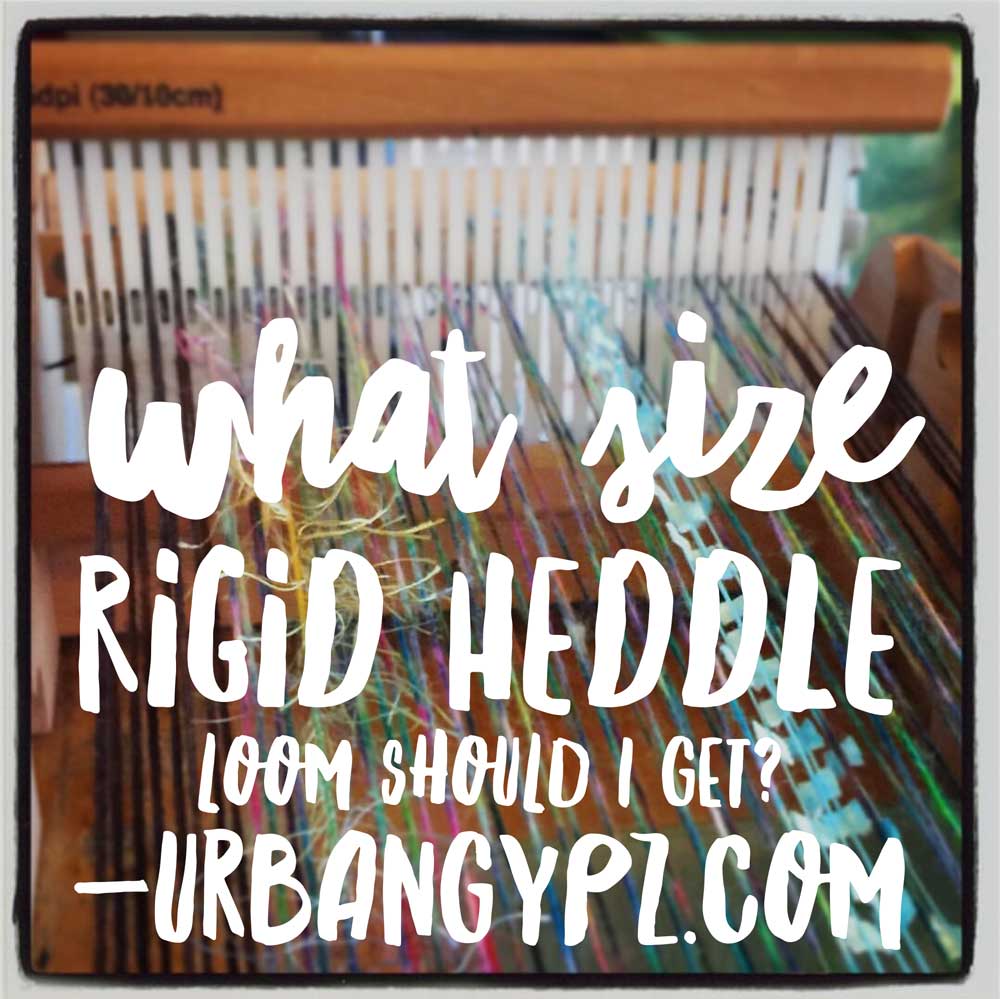
Today, Fiberista, I am going to answer a question I get quite often…What size rigid heddle loom should I get? Now, I did write an entire blog post about how to select a rigid heddle loom for art weaving. That post is long overdue for an update. For this post, I am going to address specifically whether you should get a tiny loom or a loom that will make something closer to yardage.
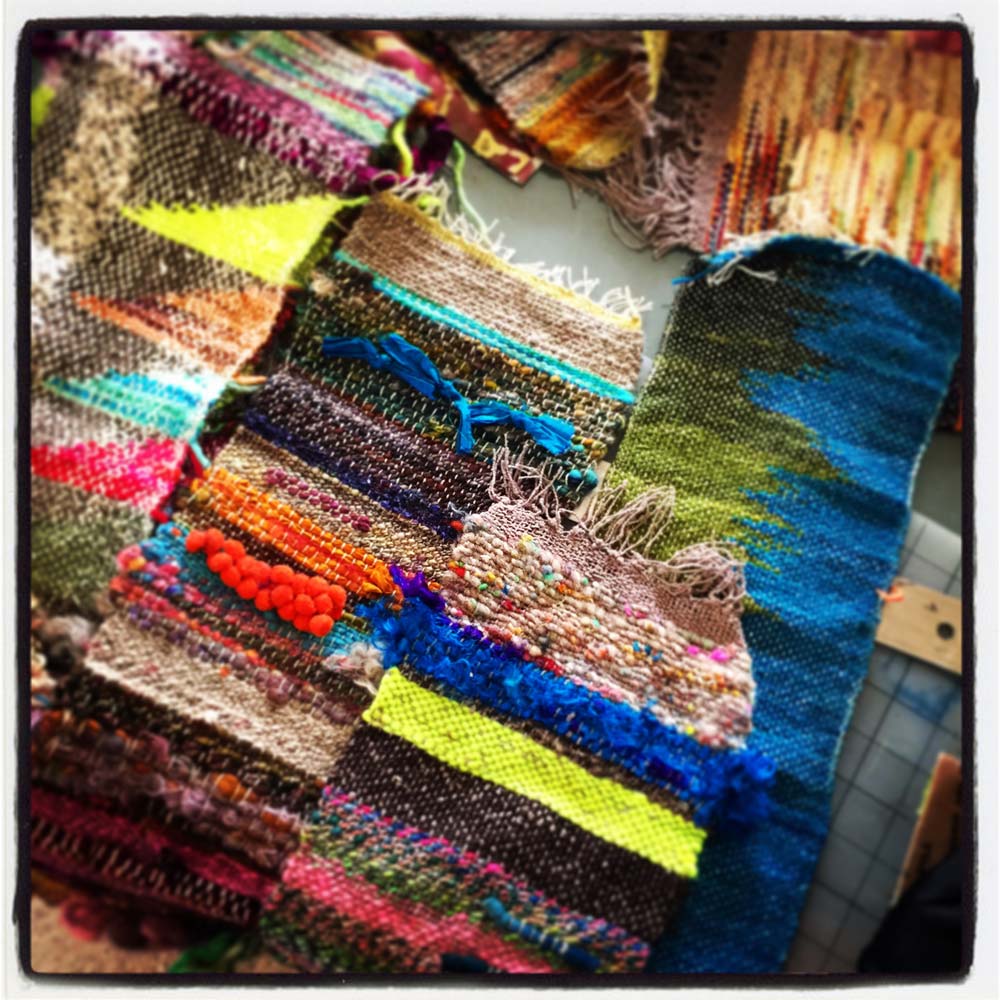
I have 2 looms. I have a 24″ Kromski Harp and an 8″ Ashford Sample It. The Harp was my first loom. And if I am making a shawl that I will actually wear, this is my go to loom. I weave relatively boring stuff on this loom, but they are things I wear day to day. Since writing this article, Kromski has come out with a variable dent reed designed for art weaving. I have not bought one yet, but it is definitely on the wish list. I bought my Sample It when I was at an art yarn class in Taos. It is my go to loom for my art weaving. They too have a variable dent reed. I do not have one, but for this small of a loom I am not sure if I need it.
So, some of the things you should consider when you are trying to decide what kind of rigid heddle loom you should buy.
- How much floor space do you have in your weaving room?
- Do you enjoy warping?
- What kinds of things do you want to make?
- If you are making garments, how are your sewing skills?
- How tall are you?
- How much do you want to spend?
- What features of each loom are you excited about?
I am going to break down some of the pro’s and cons of each size.
Larger 20-36″ looms
Straight up you can weave actual yardage on these looms. Fabric that you can actually cut out pattern pieces with. You can also weave a couple of smaller pieces side by side on this loom if you are interested in doing production. You can always warp a thinner piece. Because the loom overall is bigger, you have a larger shed space to work with. There is also more room for a longer warp, meaning you can dress the loom with an extra long warp and weave a couple of pieces in without having to re warp the loom. Some looms like the Kromski come with a warping board built into the underside of the loom. While this is super handy, I prefer to use a warping peg to warp directly onto the loom.
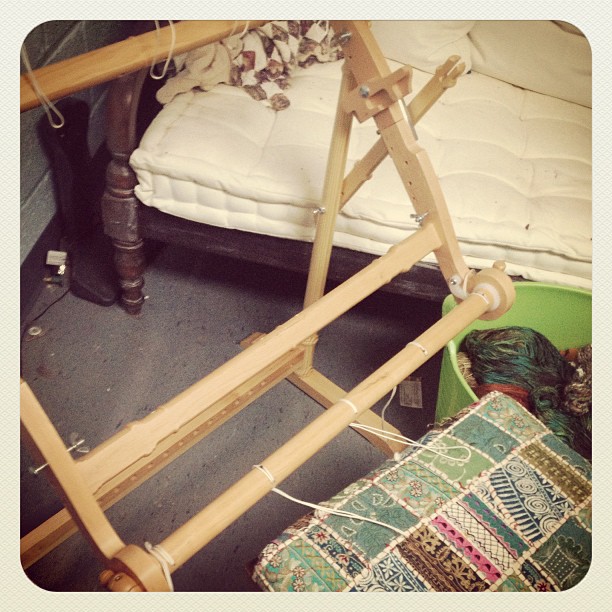
For me, the cons of this loom are pretty significant. The 24″ side can be cumbersome to support while trying manage a long 24″ shuttle. You might be able to get away with a smaller 18″ or so shuttle but any shorter it is almost impossible to reach your weft yarn across the weaving. So if you plan on weaving with a variety of yarns for an art weaving style, then you will need a bunch of long shuttles, or invest in a boat shuttle and bobbing winder. The boat shuttle however is not good for art yarns. Art weaving is even more cumbersome with a longer 36″ loom. A loom stand makes these looms way more manageable, but usually are optional at an additional cost. It takes a significant amount of time to warp a larger loom. Straight up, you have more slots and hole to thread.
A loom on a stand takes up floorspace. Do you have the floorspace available for 24″-36″. Some looms collapse for storage, but you are still looking at 24″-36″ wide.
If you are planning to make garments and cutting your fabric, be forwarded hand woven fabric can be delicate. You will need to full it, account for that shrinkage and possible stay-stitch all your pattern edges before cutting them, to assure that the weaving will not unravel. I have seen some GORGEOUS garments made with hand woven fabric. It definitely worth the effort. Your best bet can be to design your own construction that minimizes cutting the woven fabric. Using bias draped fabric can provide lovely body conforming shaping without cutting your hand woven fabric.
Smaller 7″-18″ looms
I was pleasantly surprised at how versatile smaller looms can be. It is natural to think wider fabric would override all other features when thinking about looms selection. I was not prepared for how awesome the features were for working with a thinner width. Straight up the looms are just cheaper. PLUS because of their smaller size it is easier to find things to use for yarn shuttles. I find wooden craft sticks (that look like large popsicle sticks) are super cheap and the perfect size. You can easily use yarn butterflies made out of cardboard. And in the case of chunkier art yarns and ribbons, you don’t need a shuttle at all. It is so easy to have dozens of yarns ready for art weaving. Wild yarns seem to pop more in a smaller weaving width.

These small looms are WAY easier to maneuver without a stand. I can easily weave with this loom anywhere. It is small enough to tuck into a large tote bag with a gallon zip lock baggie of weft yarns to take to your stitch and bitch.
But hands down the best feature is how fast you can warp a smaller loom. I can be ready to weave in 20 minute flat. I am not a fan of waring.
The biggest problem with smaller looms is the limits of a smaller weaving width. I am not saying garments are not possible, but it definitely takes a more creative approach piecing strips together. I have seen some gorgeous garment made combining woven strips with knitting and crochet.
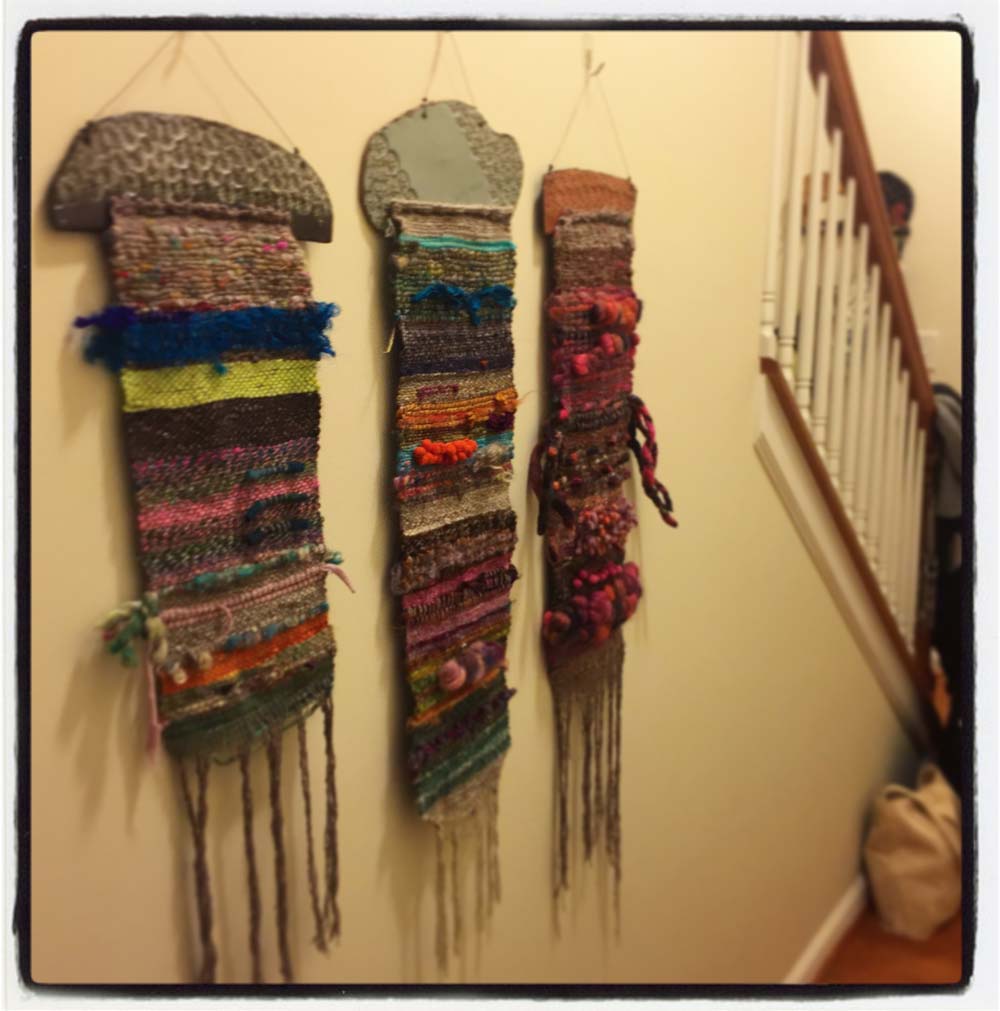
Either size will work well for wall hanging art weaving. I like the look of the thinner strips even side by side to make a wider piece. Tapestry style work is gorgeous on a wider fabric.
So I have to say I love my little loom more than the big looms, just because the convenience of size and handling tends to override the convenience of a wider fabric.
Sign Up for the UrbanGypZ Fiber Arts Collective
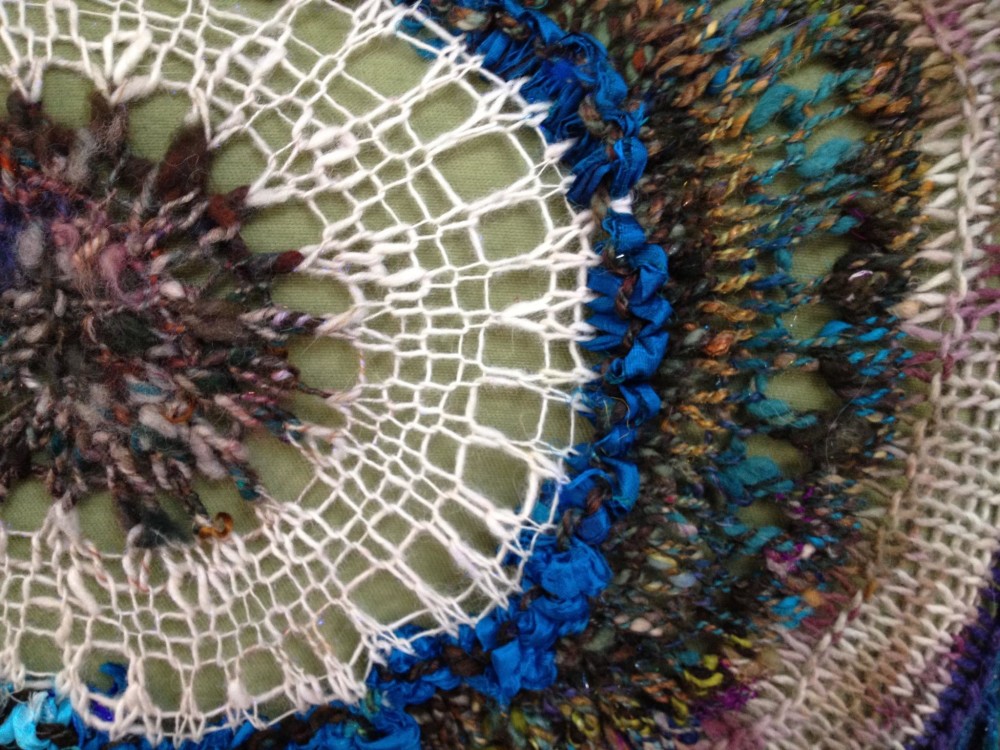

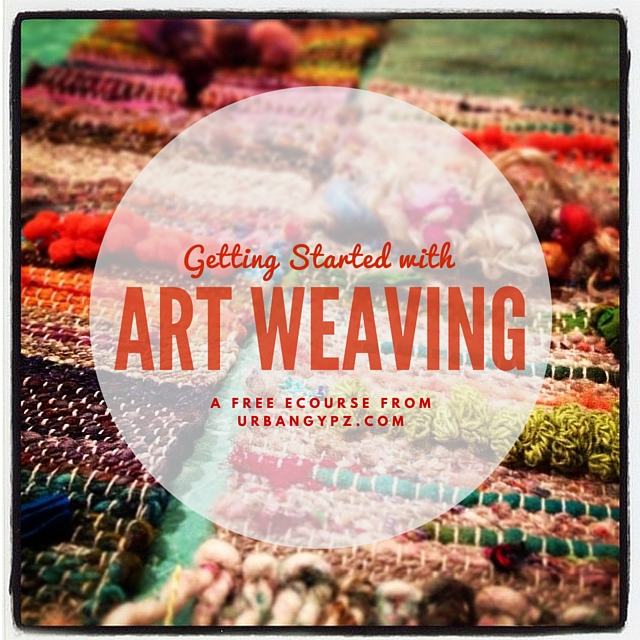
 Fiber artist Stacey Budge-Kamison AKA UrbanGypZ lives and works in Cary NC. She can also be found knitting in public, hammering out her latest e-course at local cafés and spinning yarns in her booth at her favorite arts festivals. A designer at heart, Stacey has decided that her mission is to help fellow knitters, crocheters, weavers and felters embrace their own style and creativity by exploring fiber art as it is a part of their everyday life and helping them embrace the title of artist no matter where they are in their journey.
Fiber artist Stacey Budge-Kamison AKA UrbanGypZ lives and works in Cary NC. She can also be found knitting in public, hammering out her latest e-course at local cafés and spinning yarns in her booth at her favorite arts festivals. A designer at heart, Stacey has decided that her mission is to help fellow knitters, crocheters, weavers and felters embrace their own style and creativity by exploring fiber art as it is a part of their everyday life and helping them embrace the title of artist no matter where they are in their journey. 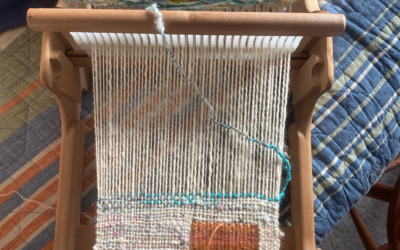
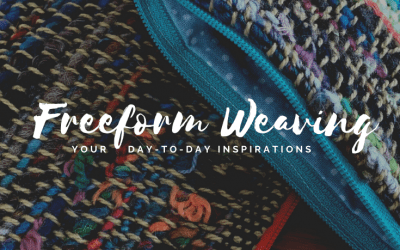
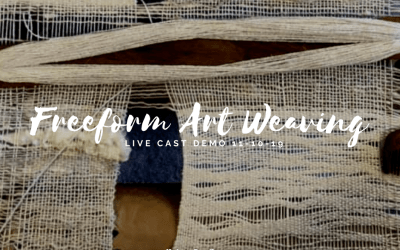
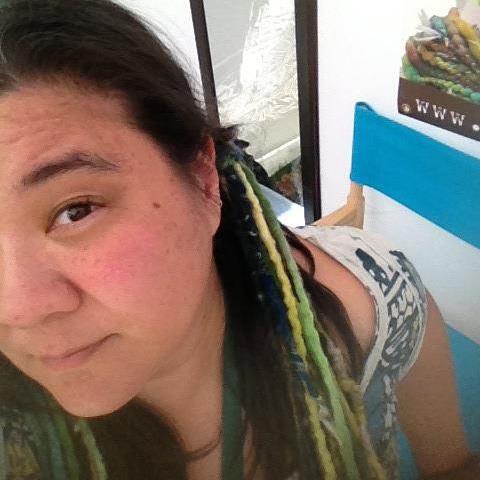

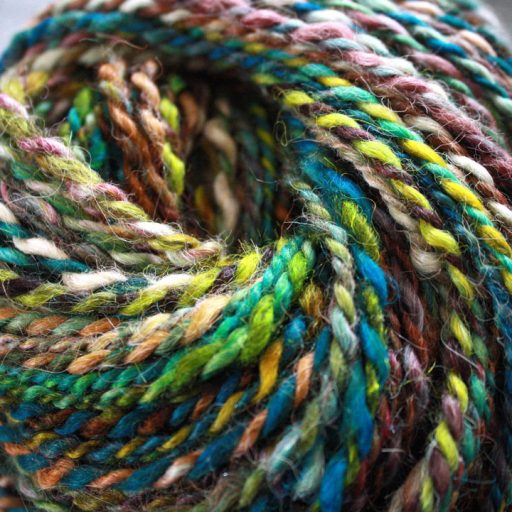


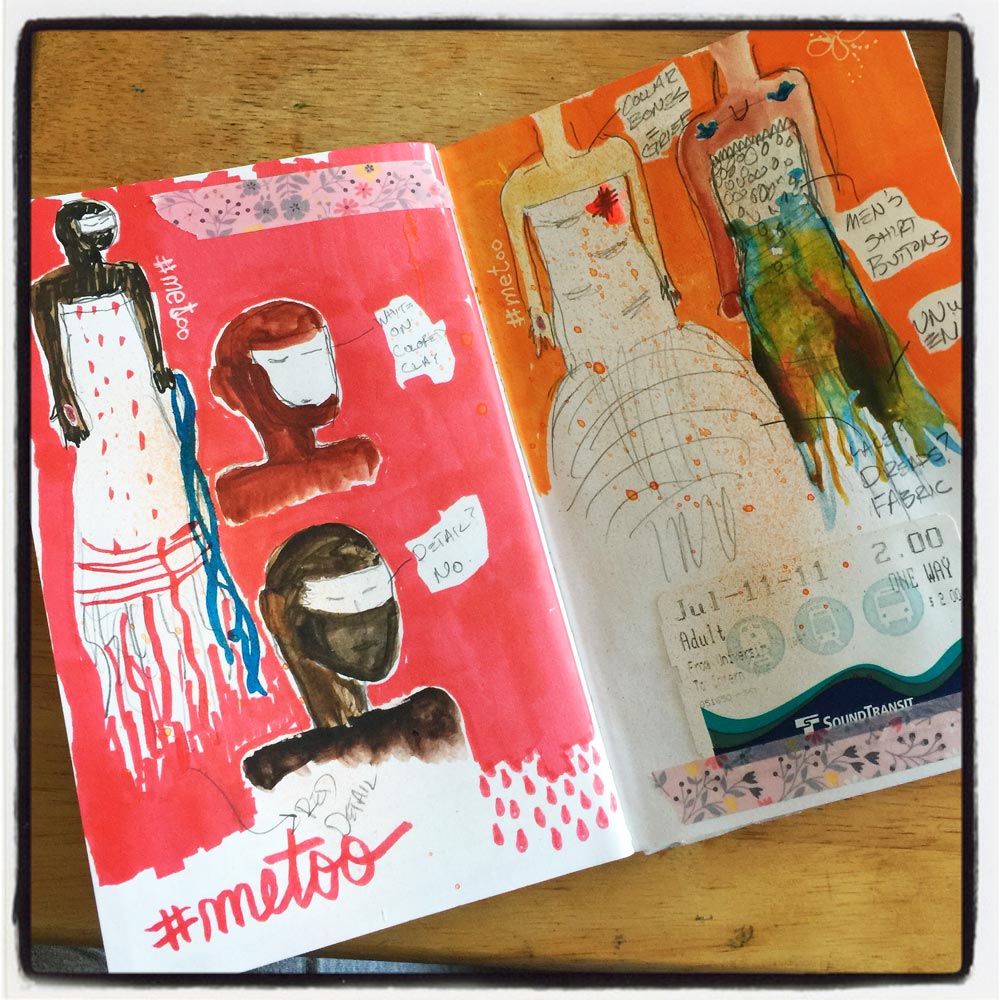
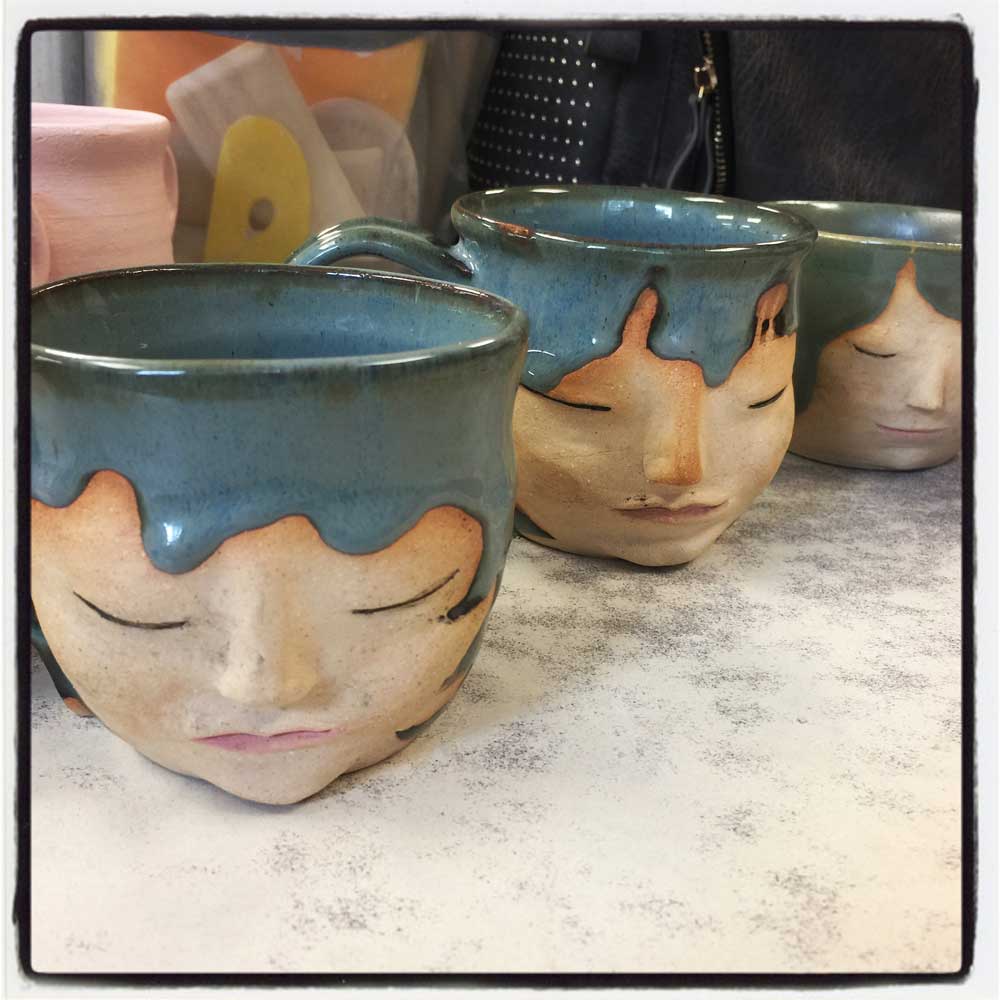

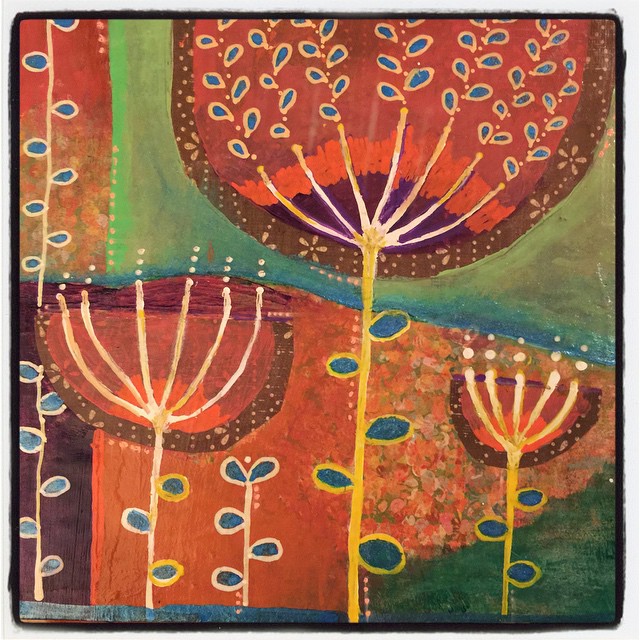


The first rigid heddle loom I got was a 36″ Kromski. I reasoned that I could always weaver narrower if I wanted and it would give me the option of wider. I was so unhappy with it. It was a beautiful loom, but I found it unwieldy and just didn’t use it.
I then got a 20″ Ashford Knitters’ loom. Better. And then a 12″. Even better! I got stands for both. And then there was a fabulous sale on the 10″ Cricket. I love that Cricket. My 20″ Ashford sees most use when I loan it to my LYS for weaving classes.
BTW, I do not love warping and do like the warping peg method, but it drove me crazy trying to do a long warp and making a huge blockade from my dining table through the living room. I figured out a way to make that process compact by clamping my warp board to the table in front of the loom and using the farthest peg as a warping peg. You can wind yards and yards in a very small space.
OOOOO!! You know I have seen pix of that warping method but have not tried it. will definitely be trying that next time.
Hi interesting comments, but can I ask a question, why would you buy a rigid heddle loom over a multi shaft loom (especially a table loom) you can usually pick up a 2nd hand one quite reasonably. ggg
I think most of us using a rigid heddle loom are using it as an extension of our knitting( I say most, I mean those who read this blog…). And I know I personally want to be able to weave like I knit: use yarn I have on hand, be able to store the loom away, carry it with me if I choose, spend more time weaving less time warping. I do think as one becomes more into the process of weaving overall, multishaft looms become more appealing. I have an old 4 shaft Structo I got for $50. Have had it 10 years and have yet to warp it.
Hi! I just purchased an Ashford 32″ loom. I find the shed is quite shallow and I’m having to spend so much time making sure my weft goes through easily and not get caught under/over the wrong yarn!!!! Shall I use a cotton thread and not yarn on the warp? I am sure frustrated. I must say, I love the creative part of weaving. Stacey has inspired me and has given me many skills. Thank you!!!
I totally know what you mean about frustrating. I do think cotton warp will help that, but I also am not a big fan of cotton warps. What you might do is notice if the same yarns are catching on the reed, and see if you can gently smooth the catch with a fine emery board or very carefully with an actor knife.